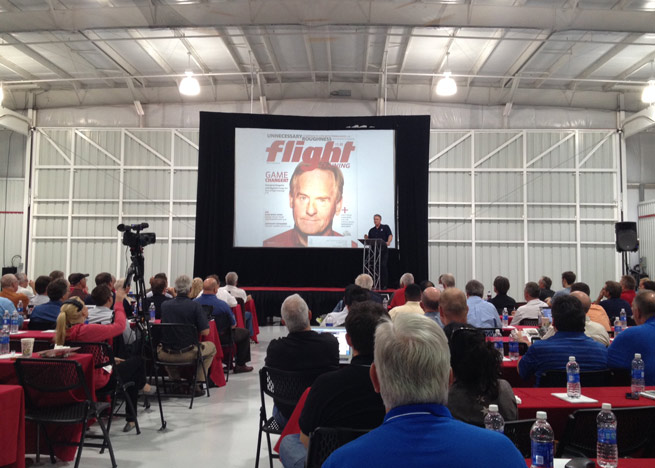
“Are we aviators or are we accountants?” That simple rhetorical question from Redbird’s Jerry Gregoire summed up the attitude and much of the focus at the 2013 Redbird Migration, which recently wrapped up in San Marcos, Texas.
As Redbird moves forward it’s clear the company is focused heavily on controlling the costs associated with all facets of aviation—from learning to fly to owning an airplane. To further make the point, Gregoire answered his own question. “We’re aviators and we’re going to fix it,” he said.
Now in its third year, the Redbird Migration is a variation on a traditional conference, bringing together flight training professionals and, increasingly, industry executives quick to confirm their commitment to this important end of the aviation market. Practically every presentation had the energy of an industry more focused on innovation, big ideas, and the need to take risks to increase the pilot community and flying activity.
Gregoire spent much of his presentation defending the role of motion in flight training. Redbird has spent the last year studying students who learned maneuvers first in the simulator and then transitioned to the airplane. “The total training time didn’t decrease, but the airplane time did,” he said. Gregoire also introduced Redbird’s upcoming helicopter motion training device, a platform he said can save rotorcraft students thousands of dollars in training. “When we started talking about this, I gave it a 15 percent chance of success.” The complexities of producing a simulator with excellent motion capabilities have been immense, he explained. Having overcome most of those, the company is expected to officially release the simulator at Sun ‘n Fun in the spring in Lakeland, Fla. At less than $200,000, it has the potential to greatly impact the cost of learning to fly a helicopter.
Redbird’s Roger Sharp stayed on the cost theme when discussing the company’s experience so far with Redhawk, its home-grown Cessna 172 with a diesel conversion and all new cosmetics and panel. Taking into account the decrease in maintenance costs, lower fuel burn, and cheaper fuel prices, Sharp said the school is finding that running the diesel 172 is roughly the same cost as a standard Lycoming-equipped model.
It’s now up to Redbird to try and reproduce the airplane conversion on a larger scale. With more than 100 verbal commitments for the sub-$250,000 training airplane, it’s clear they will have the opportunity to prove the concept in schools around the country.
Former AOPA President and Chairman of the Redbird board of directors Craig Fuller presented the findings of the Skyport’s recent $1 avgas experiment. Much to Gregoire’s relief, they found that cheaper fuel did increase activity. Over the period of a few weeks, Redbird pumped 90,000 gallons into 1,016 unique aircraft that came from 300 different airports.



